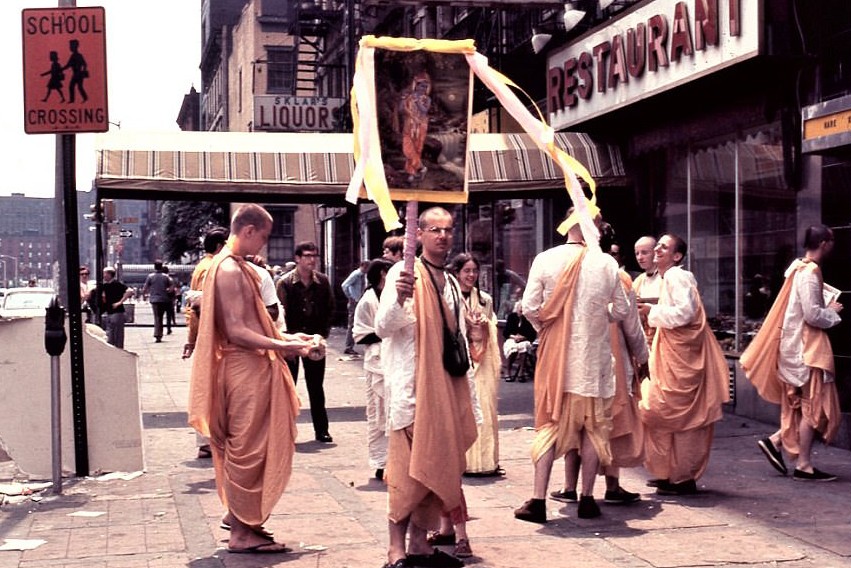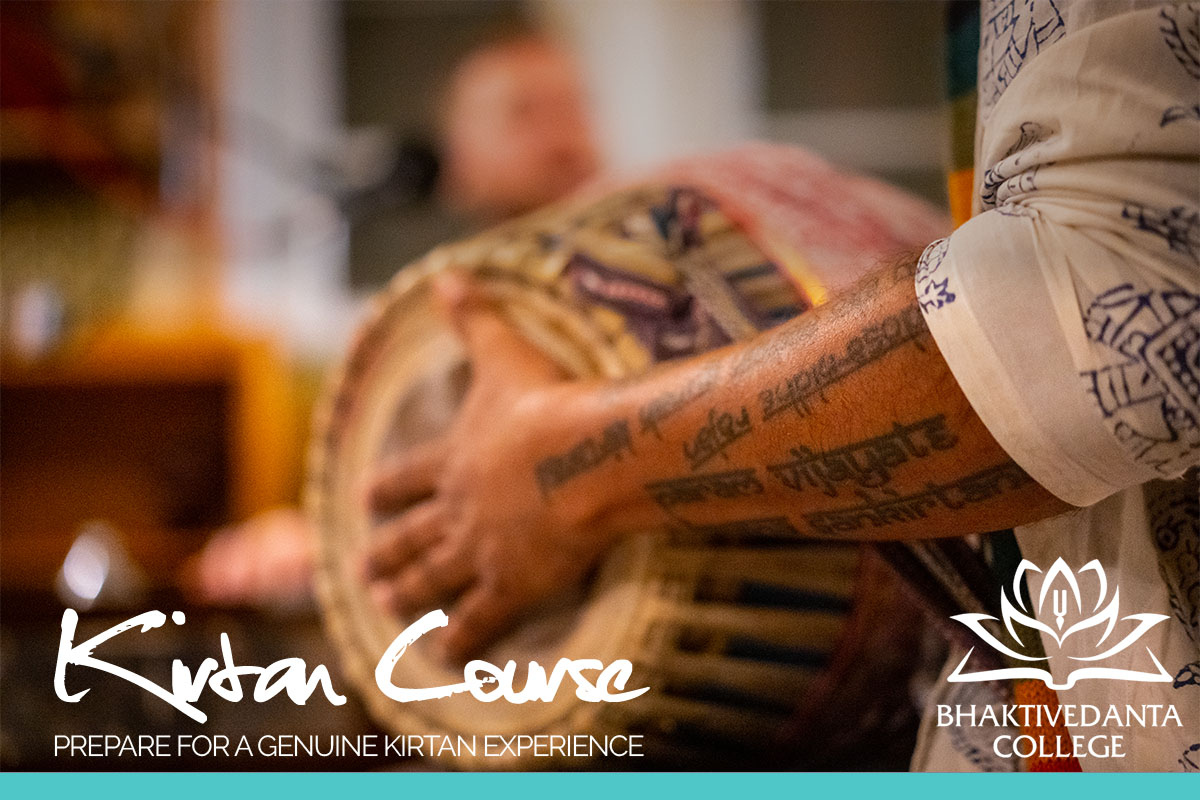AC Bhaktivedanta Swami Srila Prabhupada and kirtan
 Author: Anupama dd, MA
Author: Anupama dd, MA
Teacher of Bhakti Sastri online
Although faced with many hardships, Bhaktivedanta began giving Bhagavad-gītā classes in Bowery lofts and leading kirtan (devotional chanting) in Tompkins Square Park. His sincerity attracted the attention of young seekers, eager to learn more about meditation and Eastern spirituality. With their help, Bhaktivedanta rented a small storefront in New York’s Lower East Side and continued giving daily classes and leading kirtan.
On October 9, 1966, Srila Prabhupada and his followers sat beneath an elm tree in Thompkins Square Park, New York and held the first outdoor kirtan outside of India. This particular event is recognized as the founding of the Hare Krishna movement in the United States. As a result of this legendary event, that very elm tree is acknowledged today as the Hare Krishna tree and in 2015 New York City officials installed a permanent plaque commemorating Srila Prabhupada and his kirtan.
This was just the beginning of Srila Prabhupada’s mission to share kirtan. In fact, the world wide practice of Kirtan that we see today is all thanks to Prabhupada, along with his dedicated followers, who worked tirelessly in their service to humanity. Prabhupada circled the globe 14 times over to share this sacred practice, and introduced kirtan in all seven continents! (yes that’s correct, seven continents! In 2016 Hare Krishna kirtan was chanted in Antarctica).
In addition to the regular teachers who were there keeping everyone engaged throughout the day, there are visiting teachers. I was asked to be one of those visiting teachers for a period of five days and my function was to give a kind of overview of different elements of Indian music in the broadest sense. So we spent some time looking at the ancient Vedic tradition, out of which classical music comes. Then we considered north Indian and south Indian music, we played some samples of the different styles. We also looked at some of the folk traditions of Indian music including dance, the Rajastani practice and Kerala, some dance drama from Kerala. Then we spent time focusing more on the area of the tradition that we follow, the Bengal tradition, where we focused also on different famous poets and saints of the bhakti tradition widely understood – that means across from South India to North, from the Alvars to Mirabai, to Tukaram and Surdas and so on – in order to give a very broad picture of the wider and extremely rich tradition of Indian music.

1968., “Early Days” Kirtan
Srila Prabhupada: "…Now, here, the bhakti-yoga system is that if you stick to the hearing of Hare Krsna and the music, melodious music of kohl, karatala, then naturally you become detest full for hearing other songs…" BG 4.1 — Montreal, August 24, 1968
Srila Prabhupada’s followers continue his legacy to this day, with the practice of kirtan spreading internationally. Nowadays, it is to be understood that much of the sharing of kirtan world wide is due to the widespread growth of the yoga scene. However, it can be understood that Srila Prabhupada acted as the ambassador of kirtan and his influence will always be unique and crucial.
Although essential, kirtan was not the only aspect of spiritual science introduced by Srila Prabhupada. As well as sharing the practice of kirtan, Prabhupada translated and commented on over eighty volumes of the most important sacred bhakti texts, including the Bhagavad-gita—the must have handbook for every genuine spiritual seeker, the multi-volume Srimad-Bhagavatam (Bhagavata Purana)—an epic biography of Krishna, His avatars and His devotees, and Isopanishad – one of the principal 108 Upanishads (ancient Sanskrit philosophical texts).
Presenting Krishna Bhakti philosophy in great depth and breadth, Srila Prabhupada explains the reason behind its practice; using scriptural sources to identify the true purpose of kirtan as well as to validate its importance. By not just simply teaching How, but by also explaining Why, Srila Prabhupada sets the standard of an authentic kirtan practice that goes far beyond mere musical performance centred on subjective spiritual sentiments.
Sign Up For Bhaktivedanta College Newsletter. Be with us & join now.













Get Social